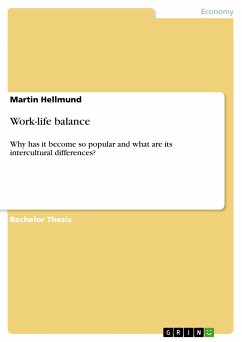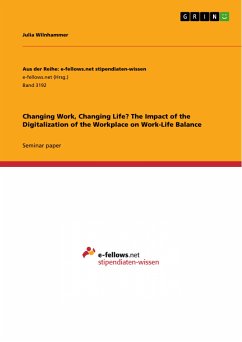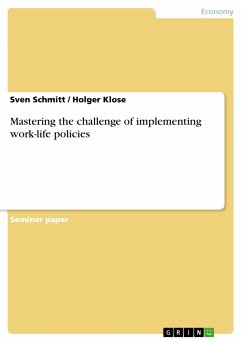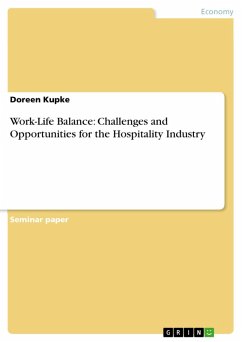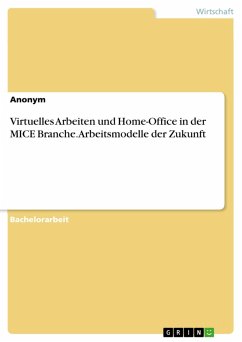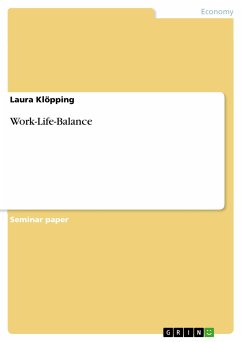Bachelor Thesis from the year 2011 in the subject Leadership and Human Resources - Miscellaneous, grade: 1,3, Ashcroft International Business School Cambridge (International Management), course: Undergraduate Major Project, language: English, abstract: Table of Contents Abstract iii List of Tables iv List of Figures v 1. Introduction 1 1.1. Background to the study 1 1.2. Objectives of the study 4 1.3. Layout of the study 5 1.4. Usefulness of the study 5 2. Literature Review 6 2.1. Introduction 6 2.2. History of the term Work-life balance 6 2.3. Defining the term Work-life balance 7 2.4. The complexity of Work-life balance 10 2.5. Reasons for the increasing popularity of Work-life balance 11 2.6. Cultural Research on Work-life balance 13 3. Research Methodology 16 3.1. Introduction 16 3.2. Research Objectives 16 3.3. Research Design 17 3.5. Reliability and Validity 21 3.6. Data Analysis 22 4. Findings and Results 23 4.1. Introduction 23 4.2. The results of the U.S. questionnaire 23 4.3. German pilot study 25 5. Analysis 28 5.1. Introduction 28 5.2. Change of society 28 5.3. Demographic changes 31 5.4. Business pressures 33 5.5. Intercultural Work-life balance differences between Germany and the U.S. 33 6. Conclusions and Recommendations 37 6.1. Introduction 37 6.2. Reasons for the popularity 37 6.3. Cultural Differences 38 6.4. Limitations of the study 39 6.5. Future Research and Recommendations 39 7. References vi 8. Appendices ix The term "Work-life balance" has become very popular over the past decades due to several reasons. For example, the demographic change and business pressure to be the "employer of choice" in order to attract a decreasing number of skilled workforce cause companies all around the world to offer Work-life balance policies that aim at supporting their employees in creating a healthy and productive balance between their working and private life. Moreover, certain differences between cultures in terms of the employees' Work-life balances and the employers' approaches to it can be noticed. As this dissertation concentrated on the differences between the U.S. and German culture, it compared a questionnaire filled out by an American employee working for an American company to a pilot study of German companies. Differences were discovered in the attitude towards the Worklife balance of the leadership within a company. Also, the offerings of sport- and leisure facilities differed as well as family-friendly policies. Finally, the dissertation came to the conclusion that Work-life balance policies have to be customised to the respective culture of the employees in order to be really efficient.
Dieser Download kann aus rechtlichen Gründen nur mit Rechnungsadresse in A, B, BG, CY, CZ, D, DK, EW, E, FIN, F, GR, HR, H, IRL, I, LT, L, LR, M, NL, PL, P, R, S, SLO, SK ausgeliefert werden.

